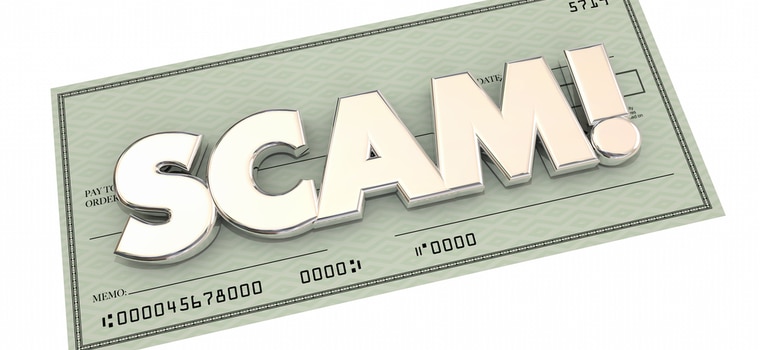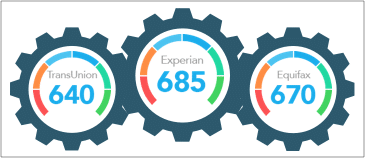Check fraud occurs any time a check is used to take someone’s money through unfair or deceptive means. There are two major types of check fraud.
- Criminals may steal or reproduce your checks and use them to make payments or draw money from your account.
- Scam artists may try to persuade you to deposit a check and send part of the money to another person. The check turns out to be fake. The money you sent may not be recoverable.
Check fraud is common. Checks are targeted for fraud more frequently than any other payment method. Understanding how check fraud works can help you protect yourself from this common criminal activity.
How Check Fraud Works
All types of check fraud exploit the same vulnerabilities in the banking system
- Banks are required to make deposited funds available quickly, often within two days, which makes it difficult to verify funds accurately.
- Checks are relatively easy to alter and forge. Fake checks may look exactly like real ones. They can even be real checks drawn on an account opened with stolen identity information.
- A fake or fraudulent check may not be recognized for weeks after it is deposited or cashed.
The funds from checks are generally available long before a check is recognized as fraudulent. That time gap creates a window of opportunity for criminals, and they have developed many ways to exploit that opportunity.
You can reduce your risk by understanding the most common types of check fraud and taking steps to avoid them.
Fraud Using Stolen or Forged Checks
Checks can be stolen in several ways:
- Your checks can be stolen from your house or car.
- If your bag or purse is stolen, checks may be compromised.
- If you mail a check it could be stolen from your mailbox or the mailbox of the recipient. Rent checks and other checks sent on regular schedules are especially vulnerable.
A blank check can be used with a forged signature, especially if other documents or identification bearing your signature is stolen at the same time. A stolen check or a canceled check you’ve discarded can be copied and reproduced. Some thieves will take only one check from the middle or back of a checkbook. You may not notice the theft immediately.
A check you have written may be deposited in a fraudulent account or modified to be payable to a different payee. Some thieves use chemicals to remove information from a check so they can change it.
A thief who gains access to your bank details may be able to use them to forge checks in your name. These forgeries may be very convincing and difficult to detect.
Protect Yourself from Fraud Using Stolen or Forged Checks
There are simple steps you can take to reduce your vulnerability to fraud using stolen or forged checks, including:
- Minimize your use of checks. Credit cards, debit cards, or electronic payment methods are more secure. Consider using automatic payment systems for recurring expenses like rent or bills.
- Secure your checks. Keep them in a locked location at home and don’t carry them with you unless you need to use them.
- When you get a new checkbook, or if your checkbook may have been left in an accessible place, check the entire book to make sure no checks are missing.
- Be careful who you allow inside your home. Housekeepers, contractors, or other employees may steal checks and other documents.
- Don’t mail checks. Deliver them by hand when possible. If you must mail them, do it at a post office.
- Never write a Social Security Number, driver’s license number, or other identifying information on a check, or allow anyone else to do so.
- Use a fraud prevention pen to write checks. These pens use special inks that are difficult to wash out with chemicals.
- Never leave blank spaces when you’re writing a check.
- Read every account statement carefully. Look for any suspicious charges. Consider setting up text alerts for checks above a certain amount.
- Secure your account numbers and any other information that could be used to forge checks. Destroy documents containing these numbers before discarding them. This includes ATM receipts, which may identify your bank, your account number, and even your balance.
- If you sent a check and the intended recipient has not received it, don’t wait. Check with your bank at once to see if the check has been negotiated by another party.
These steps will not make you immune to check fraud, but they will make you a much harder target and allow you to detect fraud faster.
Fake Check Scams
Fake check scams take a different approach. Instead of using your information to present a fraudulent check in your name, they persuade you to deposit a fraudulent check and send part of the proceeds to someone else. Scam artists use several ways to get you to do this:
- If you’re selling something online, they may send you a check for a larger amount than the sale price. Then they will ask you to send the difference back to correct the “mistake”.
- You may be told that you have won a prize and receive a check. The scammers will ask you to send some of the money to cover taxes, processing fees, or other charges.
- Some scammers pretend to hire their victims as “mystery shoppers”, who pretend to be customers to evaluate services. They send a check and ask you to evaluate a retailer that provides gift cards, a money transfer service, or a money order service. The shopper gets a check with instructions to send the money, in some form, to someone else.
- Scammers may hire a personal assistant online, send them a check, and ask them to make payments or buy and send gift cards. This may be described as a reward to customers or some similar covering excuse.
In each case, the money you send disappears, and the check you deposited turns out to be fake.
Protect Yourself from Fake Check Scams
Fake check scams rely on a victim deciding to deposit a check. You can protect yourself with a few simple steps:
- Never accept or deposit a check that overpays you for goods or services. Return the check and ask them to repay with the correct amount.
- If someone says you’ve won a prize but asks you to pay part of the money, reject the offer and cease communication with the scammer.
- Never accept or deposit a check from someone you don’t know and trust.
- Never use your personal account to transact business on someone else’s behalf.
Scammers can be very persuasive, but if you are careful and skeptical you will not fall for their techniques. If there’s any doubt, return or destroy the check and refuse to continue the transaction.
What to Do If You Are a Victim
If you believe or suspect that you are a victim of any form of check fraud, do not wait. Act immediately. The earlier you respond the easier it will be to control the damage.
You will have to report the incident in several places:
- Start with your bank. The bank can confirm whether a missing check has been cashed or deposited and stop payment if it has not been. If the check was deposited, they may be able to reverse the transaction. If your bank confirms that fraud has taken place, they can advise you on how to proceed.
- Report check-related theft, forgery, or scams to your local police or District Attorney, whichever handles financial crimes. Get a copy of the report.
- File a report with the office of your state’s Attorney General.
- If the fraud involves a check that was sent or received by the US mail, file a report with the Postal Inspection Service. Keep a copy of this report as well.
- You may also wish to make a report to the Federal Trade Commission, especially if identity theft is involved.
- If you have deposited a fake check and sent money to a scammer, notify the money transfer or money order company you used immediately. Try to get the transfer reversed. It will be difficult, but you should still try.
- Contact the three credit reporting companies: Experian, Equifax, and TransUnion, and place a fraud alert on your credit report.
- Consider contacting the Identity Theft Resource Center or the National Check Fraud Center. These are private organizations that provide advice and assistance to victims.
If you wrote a check that was stolen, notify the intended payee. Include copies of the reports you have filed. Try to negotiate an extension of payment if you cannot cover the payment.
Check fraud is more difficult to resolve than credit card fraud and may take longer. It can also recur: if a check has been forged once it may happen again. Always follow up and continue to keep an eye on your bank statements. Consider closing your account and opening a new one.
Conclusion
Check fraud is common and anyone who uses checks is a potential victim. Resolving check fraud can be difficult and time-consuming. With some forms of fraud, it may not be possible to recover the money.
Your best defense against check fraud is prevention. Knowing how check fraud works and taking action to avoid it will make you a much more difficult target. If you do become a victim of check fraud in any form, act immediately, even if you only suspect that there may be a problem. The longer you wait the more damage can be done.





